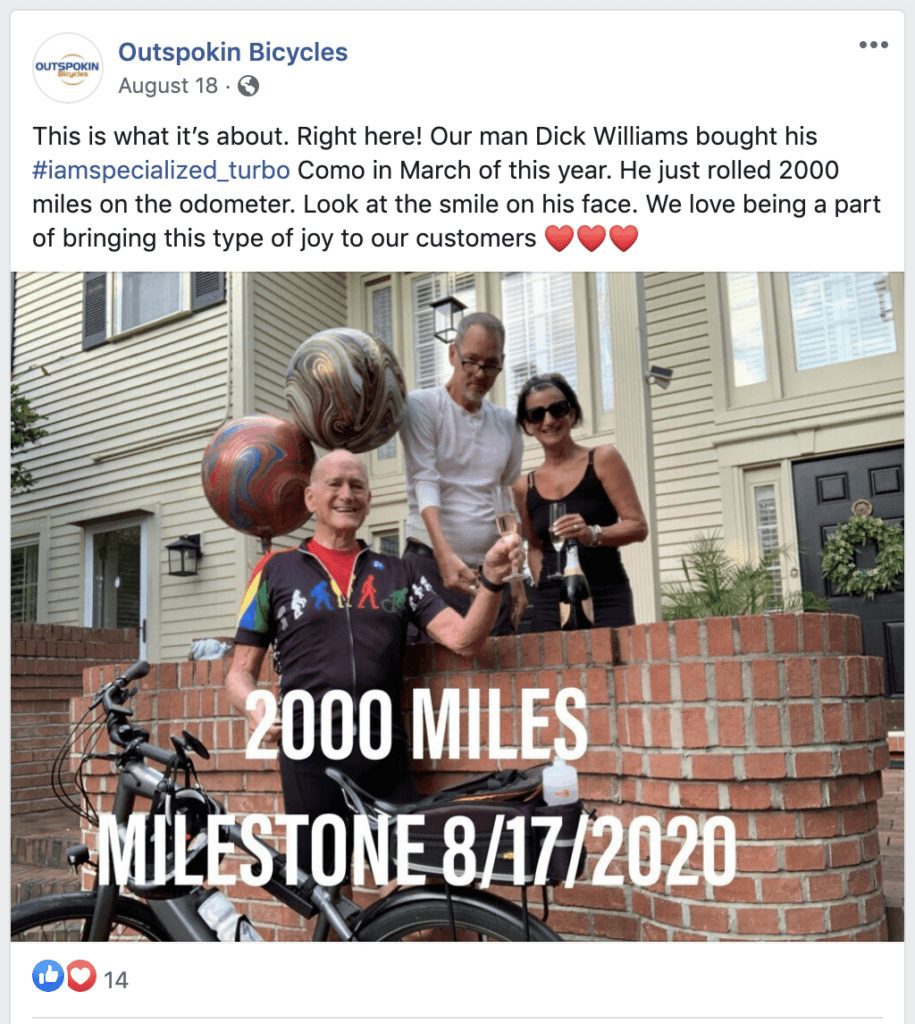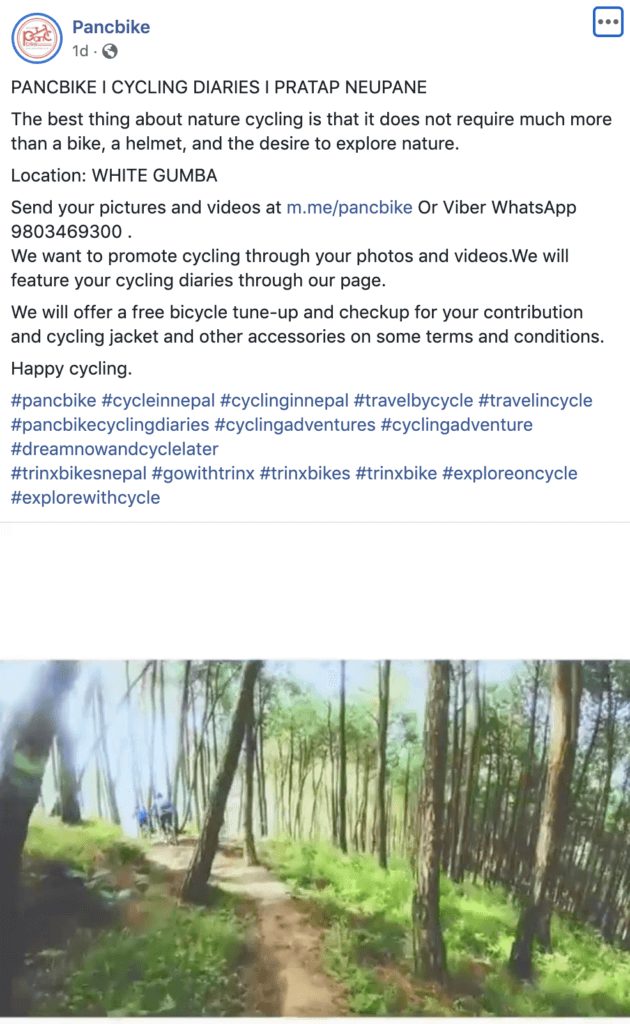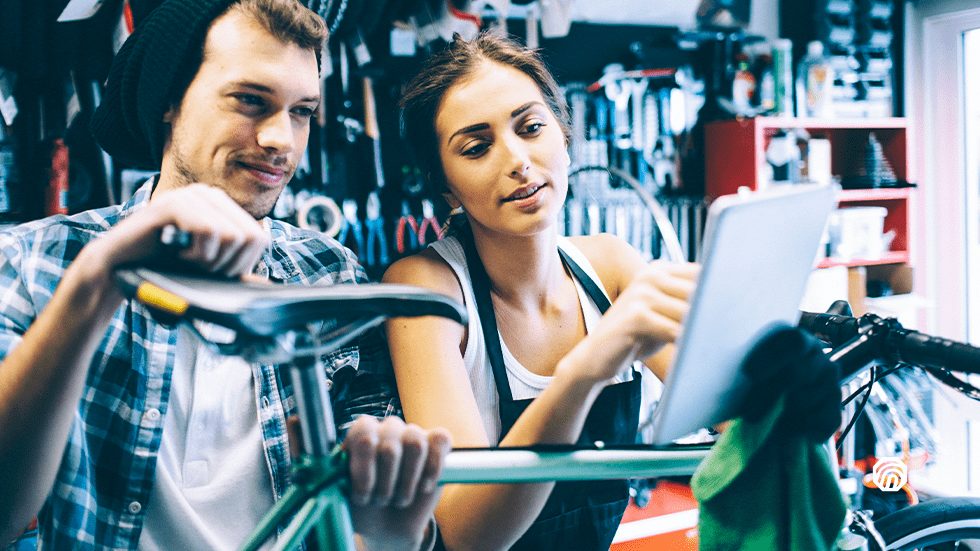With more than 3.8 billion people on social media, it’s virtually impossible to discount it as an effective marketing strategy for your business. However, for bicycle shops that sell a lot of different bike brands, an effective social media marketing strategy can be challenging to create, let alone maintain. Here, we’re sharing six useful tips for marketing your bike shop business on social media to get results (instead of just wasting effort).
1. Choose the Right Social Media Channels
Marketing specific products like bikes on social media requires a degree of personalization. Your bike shop’s posts should provide value to the exact people who will see them. Take the time to develop key target audiences and do some research to find out where they’re spending their time online.
Social media usage varies by age group, gender, educational background, geographic location, hobbies, and whether someone lives in an urban vs. rural community — to name a few variables. Avoid stereotypes and assumptions like “only young people use Instagram.”
You likely already divide your target audiences by interest, such as biking for leisure vs. commuting. You will need to connect to your target audiences by choosing the social media platform they’re most likely to use. Whatever channel they’re on, tailor your posts to those specific audiences to make your messaging more relevant to their interests.
2. Get Local With Your Social Strategy
82% of consumers prefer to shop at local businesses, and nearly half of those want to increase how much they do so. What’s more, 72% of shoppers are willing to pay more at local stores because they provide better customer service and are more trustworthy than national chains. Make it easy for cyclists in your area to shop local.
Aim for a local feel with your marketing efforts and social media. Try leveraging community events, highlighting local customers, and supporting other, non-competitive businesses. You’ll not only reach more people, but you’ll come across as authentic instead of interested only in sales. You can even try hyper-local marketing tactics to serve posts to those close to your shop who may be interested in bikes or bike-related products.

3. Innovate New Service Offerings
It’s no secret that consumers love a good deal, and social media is the perfect place to promote them. Get creative with your service offerings by advertising things like free tune-ups, seasonal tune-ups, and discounted packages that include gear like helmets, elbow pads, and bike locks. In other words: Give customers a reason to keep coming back — beyond just making bike purchases.
This also diversifies the sort of content you create and share, which means your audience and followers won’t get bored and unfollow you. Always mix it up; your audience will appreciate it!

4. Host Events for Cyclists
Another way to get shoppers into your bike shop — or simply spread the word about it — is to host events or workshops and promote them on social media. Be sure to market them as a community event anyone can see and respond to. That way, you’re getting visibility beyond just those who follow your channels. Here are some ideas to help get you started:
- Community bike rides
- General bike maintenance
- How to winterize your bike (prepping it for storage)
- How to safely ride with kids
- Trail riding 101
- City riding 101
- …and much more!
Create a hashtag for your event and encourage others to use it before, during and after the event. Take plenty of photos and video of the event itself to use as future social media content. You can stream these workshops online to get national reach, too.
5. Measure Your Marketing Tactics
Once you get your social media marketing strategy up and running, you will need to adjust it as you go. The best way to know whether your social media marketing is working is to actually track it. Pay close attention to who’s interacting with your posts, which posts get the best engagement, and whether users are clicking through to your website. All of this data will paint a better picture of what’s working, what’s not, and what changes you can make to see results.
6. Invest in a Social Media Marketing Platform
For bike shops, it can be difficult to create or maintain a social media strategy that markets both your shop and the brands you sell… and that leaves you time to actually sell bikes. ThumbStopper is here to help.
We do the heavy lifting for you by automatically posting quality, brand-curated content to your social feeds. It’s 100% hands-free; all you have to do is subscribe to an automatic stream of branded content and we’ll do the rest.
If you’re still not sure a tool can help, consider this: customers who use ThumbStopper have experienced as much as a 50% increase in store traffic and 10x customer growth. Now imagine what it could do for your business.
Shift your shop into high gear — explore our solutions for bike shops today!




